How to Leverage Social Media For Maximum Exposure and Sales
Social media platforms have become an essential part of our lives. And with this, they have also become a necessity for businesses looking to maximize their exposure and increase sales. Leveraging social media for maximum exposure and sales can be daunting, but with the right strategy and approach, it can also be a fun and exciting journey. Interested in learning more, well read on and I’ll cover six steps to help you leverage social media for maximum exposure and sales.
Step 1: Gaining a Deeper Understanding of the Benefits from Different Social Media Platforms
Social media has revolutionized how people communicate. Detailed analysis by the team at Kepios shows that there are 4.76 billion social media users around the world in January 2023, equating to 59.4 percent of the total global population. With statistics like this, it is easy to see why social media platforms are some of the most popular websites around. But what are the advantages that each platform offers, and how can you best use these advantages to your advantage? In this article, II will explain the differences and the benefits from Facebook, Twitter, LinkedIn, Pinterest, and Instagram.
Facebook is one of the largest social media platforms with over 2.9 billion monthly active users each month. It allows people to connect with family and friends as well as groups of likeminded individuals who share common interests. One of its major benefits is its capability for advertising due to its large user base, allowing businesses’ ads to be seen by a wide audience. Additionally, it provides engagement opportunities through likes and comments which can help foster stronger communities online.
Twitter boasts a huge network of currently has 353.90 million users (Source: who come together for short conversations about trending topics worldwide. Its high engagement rate gives brands exposure in an effective way if done correctly through curated tweets or hashtag campaigns. Furthermore, using hashtags on Twitter can give businesses more exposure as they help narrow down content into specific categories and locations making them easier to find via searches or mention in conversations.
Unlike other platforms which use personal profiles, LinkedIn has created a professional networking site where employers can advertise jobs and people can create business connections and even expand their portfolio of contacts within their field or industry. This makes it particularly powerful for businesses engaging in job recruitment or searching for potential employees with sought-after skillsets as it enables them to reach an extensive number of professionals quickly and efficiently.
For those interested in visual communication and marketing, Pinterest is an ideal platform for developing compelling content tailored specifically towards images or videos related to products or services sold by certain companies or brands. Brands also have another distinct advantage when using Pinterest—trending pins which are displayed prominently on all pages—allowing businesses to gain even more attention from users scrolling through the site regularly than any other social media channel today could provide.
Although quite similar in appearance to Facebook’s timeline feature but dominated by pictures instead, Instagram presents unique advantages for those looking to engage more deeply with customers as both stories/posts are interactive and comment sections allow meaningful exchanges between two parties quickly and directly rather than relying on likes alone like traditional posts do in other networks such as Twitter or Facebook
Step 2: Know Your Goals and Audience to Craft Your Strategy
The second step in leveraging social media for maximum exposure and sales is to know your goals and audience. Defining your goals and understanding your target audience helps you create an effective strategy. What are you trying to achieve by leveraging social media platforms? Is it to increase brand awareness or to generate leads?
With a clear understanding of the benefits each platform provides, it is important to know what goals and target audiences you should be striving for to develop an effective social media strategy. By carefully planning out your objectives and tailoring your message to your intended audience, brands can begin using their new found knowledge of social media advantages in creative ways. Let’s take a look at how you can leverage these platforms in crafting an effective strategy that meets your goals.
The main goal on Facebook is to foster relationships with current customers as well as reach potential buyers. Content should be tailored towards adding value to users such as tips, tricks or helpful advice so they not only feel connected with the brand but also show their gratitude by engaging in conversation or potentially even sharing posts with friends and family members who could also benefit from becoming customers.
Twitter’s short form conversations provide a great opportunity for brands to establish thought leadership in the industry they are involved in while still focusing on the goal of engagement rather than clicks or likes like other networks may prioritize more heavily. Developing hashtag campaigns helps get followers talking about topics related to products available from certain companies and hashtags such as #FridayFavorites allow for creativity when connecting with consumers through stories, polls, or simply sharing content that could be relevant to their followers.
Businesses can use LinkedIn to promote their products and services in a professional setting. Relevant information, updates and content should be posted regularly on the platform to help customers stay informed and drive more organic traffic to their pages. For an even bigger impact, sponsored content offer brands purchase options from the network itself for extra reach potential though this does require some monetary investment depending on desired audience size.
Brands utilizing Pinterest should focus heavily on visuals when creating strategies as pictures and videos are what bring engagement here. Utilizing hashtags also helps presence on Pinterest as they can either be used within descriptions or seen by visitors scrolling thought pins themselves – something that is difficult to keep track of with other networks such as Facebook or Twitter.
Like Pinterest, Instagram’s visual- dominant nature makes it important for businesses to concentrate primarily on creating beautiful photos or captivating short videos which will draw people’s attention quickly. Also like other platforms, engaging with customers through comments or DM’s allows for a better relationship between company and customer — something Instagram has become increasingly well known for doing effectively even amongst all its competitors today.
Step 3: Research and Monitor Competitors on Social Media
Staying up to date with competitors’ social media strategies is a key part of any well-formed plan. Not only does it give brands the opportunity to understand what tactics are working for competitors in their industry, but it can also help them be more creative when crafting their own campaigns. Here are some tips to consider when researching and monitoring competitors on social media.
While organic analysis which entails sifting through competitors’ profiles may give an overview of what works for them, applications such as Iconosquare or Social Maestro will help brands gain insights that could not be manually ascertained. These programs extract metrics from posts and track engagement rates, follower growth, content performance and other analytics that would otherwise take hours of research went through manually – something valuable to small businesses who may lack the resources of larger competitors.
Once data has been collected, it should be used by businesses to craft their own individualized strategies that make use of their unique advantages. By studying competitor’s accounts, brands can identify opportunities they may have missed before – such as content ideas taken from stories posted by others in the industry – while gaining insights into the various aspects where their own strategy might need improvement like better design or visuals for content pieces.
Marketers can also use this practice to keep up with emerging trends in customers’ behavior in order to make sure brand messages are always staying current and relevant. For example seeing how much engagement certain types of posts or topics get compared to others can indicate what type of content resonates more with target audiences allowing brands to focus more on those tactics rather than ones they know will not bring desired results quickly enough.
This information helps you improve your content and understand how you can differentiate yourself in the market.
Step 4: Create Compelling Content that Resonates With Your Followers
Creating compelling content that resonates with your followers is the heart of social media marketing. Quality content not only attracts more followers but also helps your audience stay engaged and encourages them to share your content, effectively increasing your reach.
Compelling content needs to be informative, entertaining, and relevant to your target audience. Always aim to offer value to your audience, whether it is through educational content, contests or giveaways, or sharing industry insights.
Relevant content is essential to successful social media campaigns, as it is what actively drives audiences to interact with companies’ profiles. Crafting compelling messages that are interesting or useful enough for customers to take notice of can be challenging, but the effort will most likely be worth for those willing to put in the work. Here are some tips for creating content that resonates with followers.
Knowing who customers are and what interests them helps businesses craft posts that cater more specifically to their wants and needs – something which should make them more likely to interact with brands by liking, commenting and sharing posts. For example if brand’s target audience is Millennials then focusing on topics like current news stories or pop culture events would make more sense than talking about historical events since they do not hold much relevance today – something which an older demographic may find more interesting instead.
People tend to gravitate towards emotion more so than logic when it comes to making decisions online. Brands should attempt to tap into their customer’s feelings by crafting content pieces that may evoke certain emotional responses from readers – whether it be joy, anger or surprise – as this will help create stronger connections between them and their potential customers than what could be achieved through a purely informative post.
Visuals play huge role in drawing eyes away from scrolling timelines and onto specific post being shared. Posts with relevant images or videos attached not only attract more engagement but also increase recall rate of messages being shared as people tend remember pictures better than words alone – something marketers should keep in mind when crafting content pieces for their respective networks.
Step 5: Use Paid Media to Boost the Reach of Your Posts
Paid media is a great way to expand the reach of a brand’s online presence beyond what would normally be accomplished through organic methods. With it, messages are seen by more people than those followers already connected with companies while giving brands control over various aspects of their social campaigns such as who sees the posts and how much money they spend on them. Here are some tips for leveraging paid media in order to better increase brand awareness and reach.
Brands should take their time researching different options available when creating ad campaigns – as certain platforms may be better suited for reaching desired customers than others. For example if company wants to get message seen by younger audience then investing in platforms like Snapchat or TikTok makes more sense than putting funds into more mature ones such as LinkedIn or Facebook – something which should help narrow potential customer base down to those who are most likely interested in products or services being offered.
Ads that garner more attention tend have higher conversion rates and engagement overall, so marketers should make sure messages being crafted for these purposes are eye-catching and thought provoking enough to draw attention away from standard timeline feeds. Content pieces should also match both platform being used and possible customer demographics in order to increase chances of readers taking action rather passively scrolling past them – something which could be achieved by making use of visuals, stories, polls or other interactive elements available.
Once ads have been up running for a while, businesses can look into performance metrics given by each platform see how well they were received by target audiences and if there were any changes that could made in order improve future campaigns. These reports can give an insight into various aspects of campaigns such as cost per result achieved, total views garnered or click through rates – all essential stats that must be taken into account during planning process efforts in order maximize ROI from efforts being put into building out social ad strategies.
The bottom line is that using paid media can help you reach a wider audience and amplify your social media efforts.
Step 6: Measure Results and Adjust Accordingly For Optimal Performance
The final and most crucial step in leveraging social media for maximum exposure and sales is to measure your results and adjust accordingly. By analyzing your metrics, such as engagement rates, reach, and conversion rates, you can optimize your social media strategy.
Once brands have launched their respective social media campaigns, it is essential for them to monitor performance and make adjustments as needed in order to maximize results achieved. This requires assessing data gathered from each platform available so that informed decisions may be made going forward when creating content and allocating budgets across different networks. Here are some tips for measuring results and adjusting accordingly for optimal performance.
Before implementing any changes to an existing strategy or launching any new campaigns, businesses should set measurable objectives that can help track progress better in relation to goals being put forth – as these key performance indicators (KPIs) will allow organizations measure how well they are doing versus expectations placed onto various activities while providing a basis upon which they can compare results over time with those of other companies in the same sector.
There are numerous analytics platforms out there that allow users to view actionable metrics such mentions, followers gained, engagement rate or link clicks in order to gauge customer responses towards messages being created by brands. These data points provide marketers with insights into how well posts resonated with potential customers as well as what kind of messages works best for their audiences – both of which may be crucial when tailor ads more accurately moving forward.
Brands should strive to test different types of content pieces whenever possible in order to see whats works best for particular networks or customer demographics They may find that certain posts gain more traction than others and subsequently adjust budget allocations towards those performing better in order optimize campaigns down the line. Doing this frequently also allows companies identify patterns related to their products or services so that messages sent out may be tailored even further and engage target audiences even further.
This step enables you to learn from what is working and what is not working and modify your approach for optimal performance.
Leveraging social media for maximum exposure and sales may seem daunting, but with a well-crafted strategy, businesses can build a strong relationship with their audience and increase their sales. Remember to invest in quality content, research your competitors, and measure your results.
Lastly, never underestimate the power of social media. It can be the foundation of your marketing efforts and lead to exceptional business growth.








I know that I haven’t spent enough time looking at other accounts like mine and analyzing what is effective. I know what I like and I can see what gets more engagement but I really haven’t done a deep dive. I’ll start looking at that this week.
That is good to hear, Kimberly. I hope you get to dive into it. Knowing what you want to see is such a great start. Let’s get more engagement!
Hi Paul,
I was just looking up the current facts for getting the best picture size/resolution for Instagram pictures and videos. I was surprised to find they have a few other formats that they are providing for other types of presentation. Now I am taking some portrait format videos for this platform.
Next, I may consider reformating some of my content for Printrest.
What is the best way for me to include links to direct readers to my blog content?
If you will be posting links to your social media, I would suggest you make sure the links are easily accessible and noticeable. Some use shortened URLs for this. Also, include a call-to-action in your post. You may also want to consider adding emojis to emphasize the link. Hope it helps! Stay awesome, Doug!
This is such a great post! I really need to sit down and review my own engagement on various social media networks.
Have you written about the issues with Twitter and how it will effect social media engagement? I couldn’t quickly find a way to search your blog posts!
Not yet – I was thinking about doing that… Twitter changes daily – LOL. There seems to be so much drama going on there!